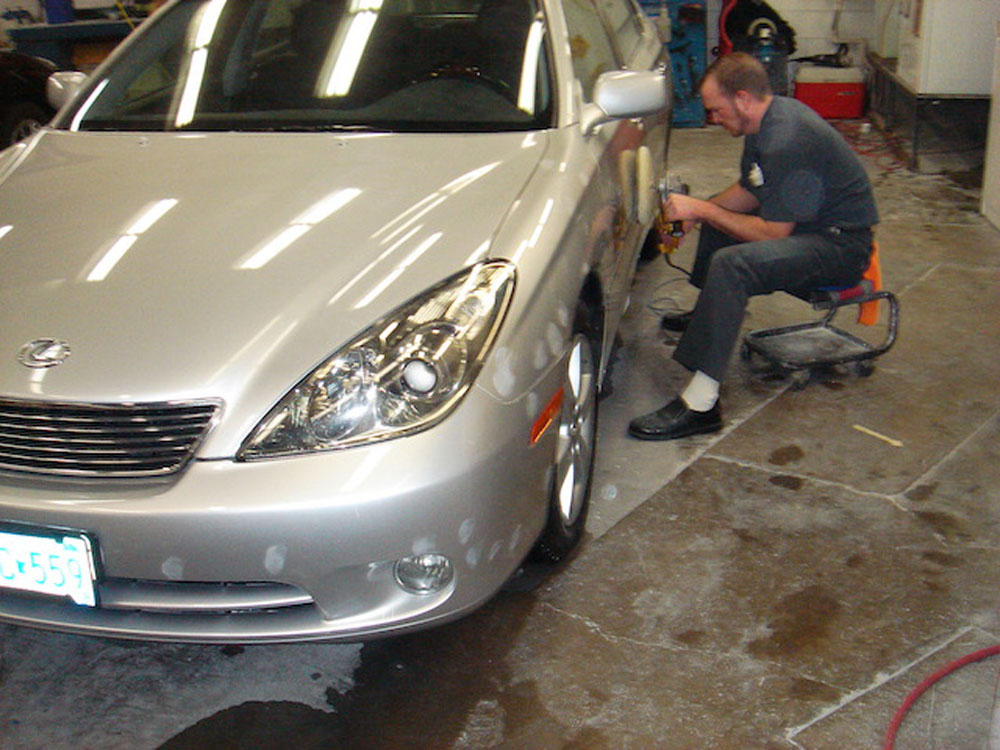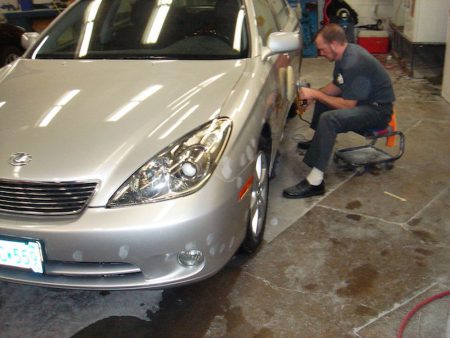
 When you’re better educated about your automobile, you’re better equipped to prevent issues and the repairs that come with them. No matter how technical and highly engineered your vehicle might be, you can use your physical senses to detect a lot of frequent issues. You can eyeball the space around your car or truck, keep your ears open for unusual sounds, sniff out strange smells, and even just generally sense difference in your ride handles that’s not like it used to be.
When you’re better educated about your automobile, you’re better equipped to prevent issues and the repairs that come with them. No matter how technical and highly engineered your vehicle might be, you can use your physical senses to detect a lot of frequent issues. You can eyeball the space around your car or truck, keep your ears open for unusual sounds, sniff out strange smells, and even just generally sense difference in your ride handles that’s not like it used to be.
Looking For Trouble
Occasional drops of fluid or even mild stains underneath your automobile aren’t likely to mean much most of the time. However, any wet spot needs your prompt attention. Investigate puddles as soon as you can.
Identify different fluids by judging their consistency and color:
-Pastel blue, fluorescent orange, and yellow/green colors typically mean that the engine overheated, or antifreeze leaked via a water pump, radiator, or faulty hose.
-Dark brown or black fluids that are oily in nature usually indicate an oil leak, often due to a bad gasket or seal as the source.
-An oily spot that is red, on the other hand, suggests a leak of either power-steering or transmission fluid.
-A puddle of water that is clear in color isn’t typically something you need to worry about. It might just be routine condensation resulting from using the air conditioning in your vehicle.
When Trouble Smells
Some issues might be right under your nose, but you can also use your nose to identify them because of their odor:
-Burned toast is a light odor, but a sharp one. It’s frequently a sign of either insulation burning or an electrical short, if not both. The safest thing to do here is not drive your automobile until you can have someone properly diagnose this issue.
-Rotten eggs are a constant smell of sulphur burning, often signifying an issue in either the catalytic converter or some other emission control component. This is not something you should put off in terms of either diagnosis or the repairs associated with the issue.
-Thick and acrid odors often just mean that oil is burning, so look for any symptoms of an oil leak.
-Gasoline vapors in the air, particularly following a failed start, might suggest that you flooded your engine. Wait several minutes before you attempt another start. If you have a persistent odor of this nature, then odds are good that your fuel system has a leak. This is a possibly hazardous situation that requires prompt attention and response.
-Arid chemical odors like burning resin can possibly mean that the clutch or brakes are overheated. Check out your parking brake first. Stop the vehicle and let the brakes have time to cool down, especially if you have been riding them repeatedly on mountain roads. If you see light smoke coming out of a wheel, then you probably have a stuck brake. Don’t drive another inch, and have someone two your automobile for repairs.
-Sweet and steamy odors might not be that bad to smell, but they can also mean a coolant leak. If you don’t have a warning light or temperature gauge warning of overheating, then drive as carefully as you can to the closest service center, always mindfully watching your gauges. If, however, your odor is accompanied by steam from underneath the hood and a hot and metallic scent, then assume your engine has already overheated. Pull over somewhere immediately. Get a tow for repairs, because driving any more after this can seriously damage your engine.
The Sounds Of Trouble
Rumbles, rattles, shrills, squeals, clicks, and squeaks are among many different sounds that can be hard on the ears and nerves and yet also insightful into potential issues you need to deal with. The following are some of the more frequent ones you should know about:
Squeals: Sharp noises typically associated with engine speed.
-Worn down or loose power steering, air conditioning belt, or fan.
Clicks: Slightly sharp noises usually associated with vehicle and/or engine speeds:
-Bent or loose fan blades.
-A wheel cover that is loose.
-A low level of engine oil or a stuck valve filter.
Screeches: These are metallic sounds very high in pitch, even piercing to the ears. They often happen when an automobile is moving:
-Brake wear indicators often trigger these so you know they need some upkeep.
Rumbles: Rhythmic sounds like these are low in pitch and can mean different things:
-A universal joint or other drive-line part is worn down.
-A muffler, converter, or exhaust pipe that is now defective.
Pings: Associated with engine speeds, these are tapping sounds that are high in pitch and metallic in their acoustics:
-Typically the result of using gas/fuel that has a lower-than-suggested octane rating. Consult your owner’s manual to find out the right rating to use. Should this problem persist, then it might be that the engine ignition timing is the culprit.
Heavy Knocking: These rhythmic pounding sounds can mean a number of things:
-The transmission torque converter is loose.
-The crankshaft or connector rod bearings have gotten worn down.
-Clunks: These thumping sounds seem random, but they can mean specific situations:
-A muffler or exhaust pipe got loose.
-A shock absorber or another component of the suspension got loose.
What Trouble Can Feel Like
Subpar performance, rough riding, hard handling, and vibrations are all usually signals that you just feel while driving, and they also nearly always mean that something is wrong.
Steering
-Wandering or a hard time keeping straight: This can mean the front wheels are misaligned. It might also mean the ball joint, idler, or other steering components are worn down.
-Pulling: If the vehicle likes to head left or right when in motion, then it might be as minor as a tire that needs inflating or as severe as a front end with misalignment or damage.
Ride/Handling
-Poor cornering: This can be the result of improper tire inflation, but also shock absorbers and other components of the suspension system getting worn down.
-Weak shocks: There aren’t any consistent guidelines about when you need to get struts or shock absorbers replaced. However, you can test your automobile by bouncing your vehicle hard in both upward and downward motions at each of the wheels before letting it go. Count how many times your car bounces. If it’s twice or more, then you likely have weak shocks.
-Springs: These don’t typically get worn down and won’t need to be replaced, unless there’s one corner of your ride that’s visibly lower than the rest. You can damage your vehicle’s springs if you overload your vehicle.
-Properly balanced tires: Improper balance or unbalancing can mean vibrations. Suspension and steering components might wear down before they should.
Brakes
Brake issues can show up a number of different ways. Schedule your vehicle diagnosis and potential repairs if:
-Your vehicle pulls to either side when you apply the brakes.
-Your ‘brake’ light on your dashboard is illuminated.
-You can hear or even feel grinding and scraping when you break.
-Your brake pedal sinks down to the floor under consistently applied pressure.

